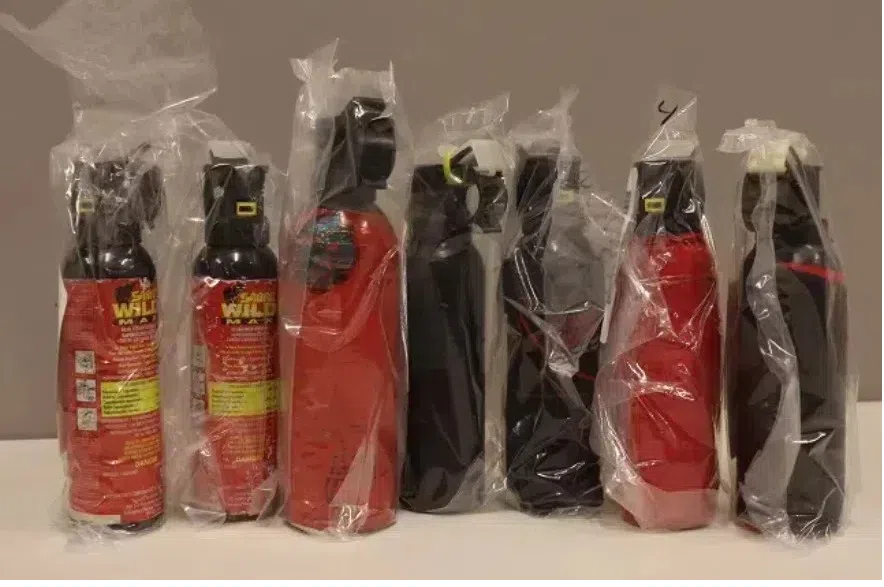A 16-year-old boy is facing firearms charges after a fight involving a pellet gun and bear spray inside a Saskatoon apartment on Thursday.
According to police, officers were called to the apartment in the 800 block of Appleby Drive, in the city’s Meadowgreen neighbourhood, at around 4 a.m. after getting a report that bear spray had been discharged inside an apartment.
Read more:
- Prince Albert man, 67, dead after three-vehicle crash on Highway 3: RCMP
- Producers say 75% of southwest Sask. farms may disappear if drought conditions persist
- Regina man accused in Weyburn Highway shooting denied bail
The caller also reported a man armed with a handgun, police said.
“Upon arrival, officers determined that a confrontation had occurred between persons known to one another resulting in bear spray and an imitation firearm being discharged; the pellet struck a woman causing a non-life-threatening injury,” the Saskatoon Police Service said in a statement.
The people involved in the altercation were gone by the time the officers arrived, but the police force said one of the suspects was found and arrested nearby, and he was carrying a pellet gun at the time of his arrest.
“As a result, the 16-year-old male has been charged with several firearms-related offences,” police said. “Members of Patrol are continuing to investigate.”
What is bear spray?
Bear spray is a deterrent containing capsaicin, a chemical found in chili peppers. The canister releases a cone-shaped cloud of spray at a speed of over 100 km/h, approximately 10 m away. Capsaicin inflames the eyes and respiratory system of both animals and humans.
According to bearwise.org, the spray is oil-based, so first aid for the bear spray is to wash off the residue with soap and water, don’t rub your eyes or nose, and rinse your eyes with clean water until the irritation subsides. The effects generally wear off in about 45 minutes, the bear awareness site says.
In 2025, the provincial government announced new regulations aiming to reduce the number of criminal incidents involving bear spray.
The changes include regulations to restrict the possession of bear spray in public urban spaces and a ban on altering bear spray to hide or disguise the product’s identity. Anyone charged under the new regulations could face fines of up to $100,000.
According to the provincial government, police in Saskatchewan have responded to over 3,000 bear spray incidents over the last five years, but the total number of incidents involving bear spray could be much higher when factoring in unreported cases.











